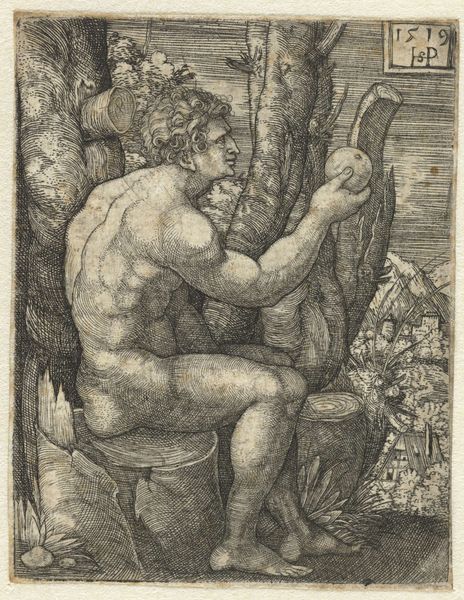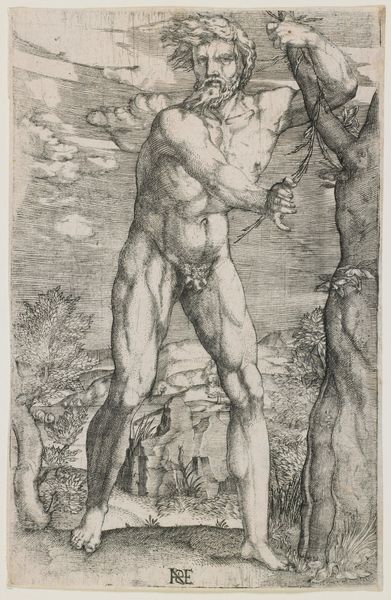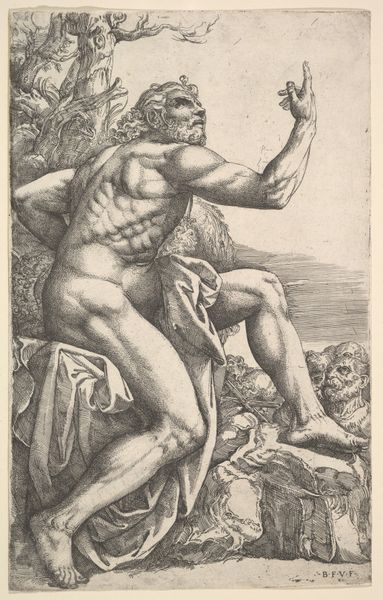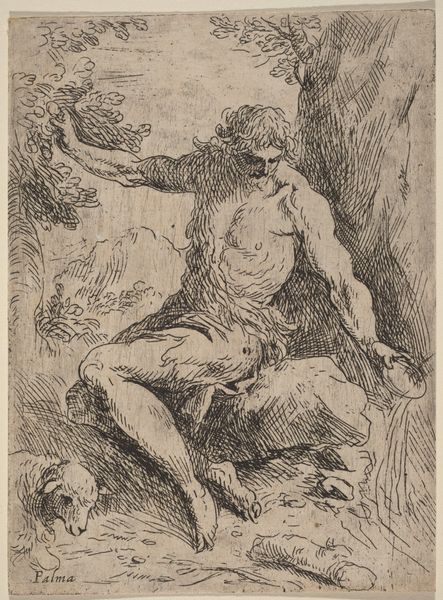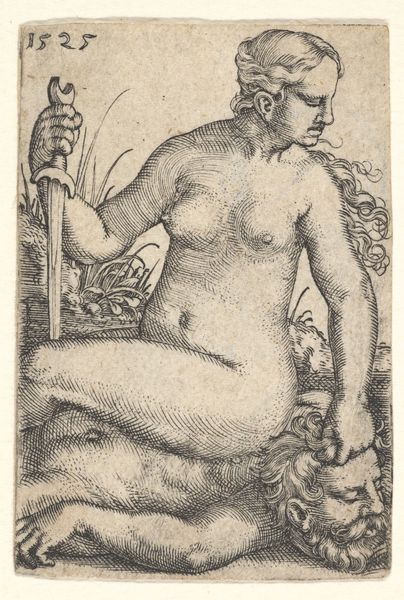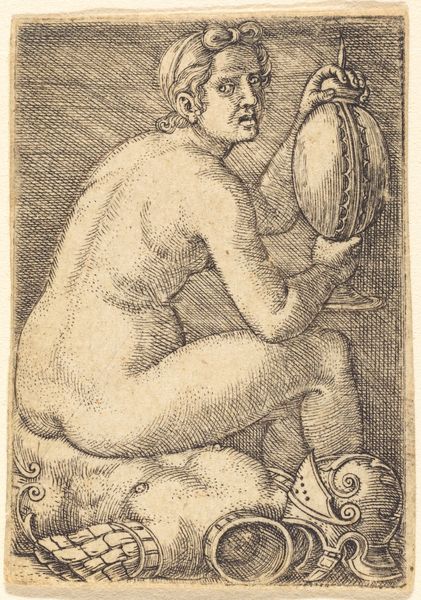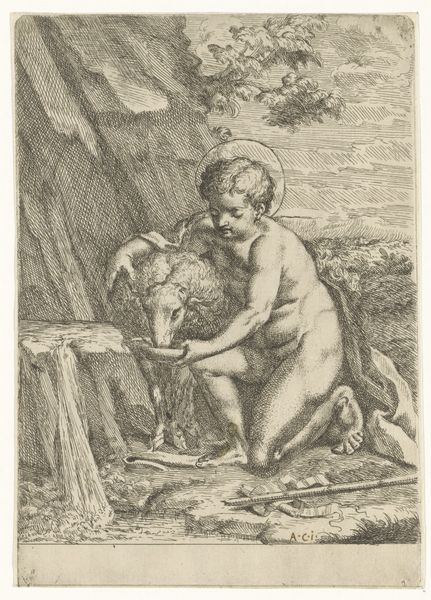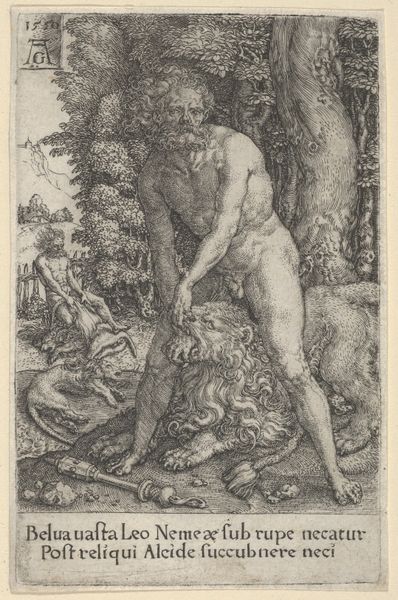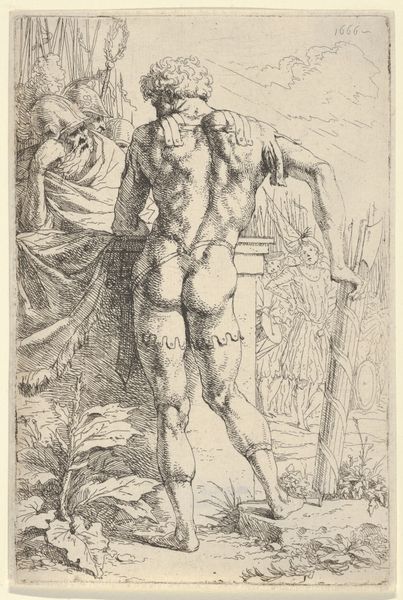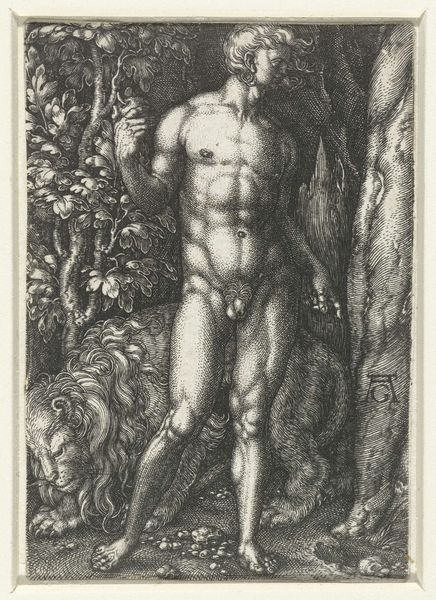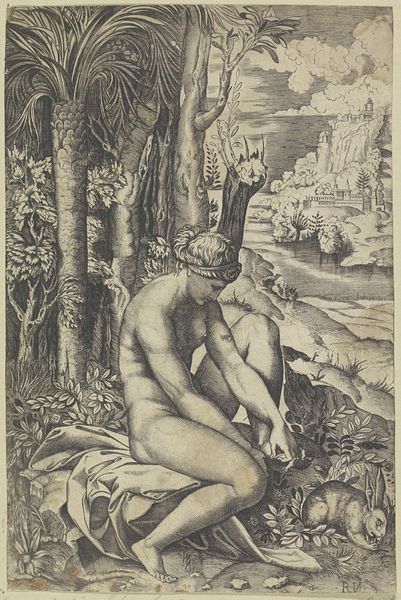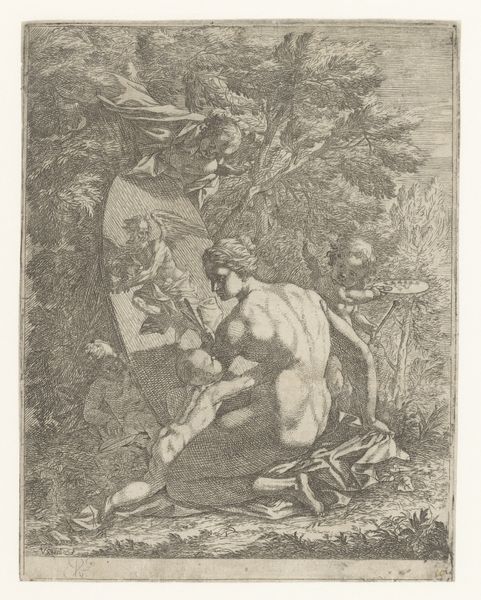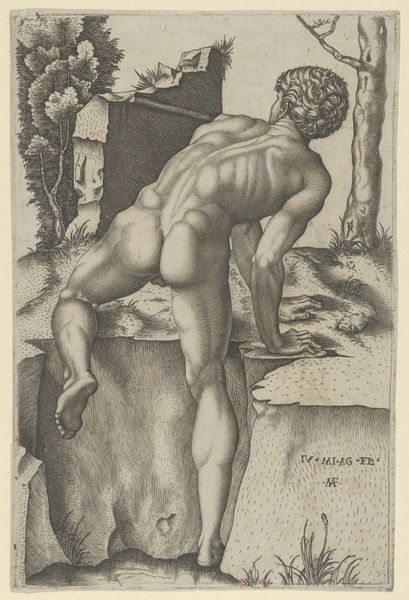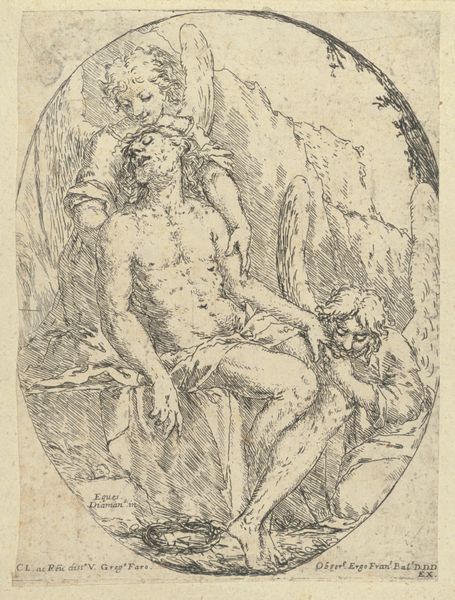
print, engraving
# print
#
figuration
#
history-painting
#
northern-renaissance
#
nude
#
engraving
Copyright: National Gallery of Art: CC0 1.0
Curator: Sebald Beham's "Adam Seated," created in 1519, is an engraving offering a fresh perspective on a well-known biblical narrative. What strikes you upon seeing it? Editor: It’s melancholy. The almost pensive quality in Adam’s gaze as he contemplates the apple. And the heavy, dark shading around him makes his figure all the more isolated. It's a raw and introspective take, a definite contrast from the idealized, triumphant versions we often see. Curator: Exactly. Beham, working during the German Renaissance, engages with humanism through his rendering of the nude. This wasn’t just about aesthetic beauty, but it placed humanity, quite literally in this case, at the center of intellectual discourse. Editor: I see that. Especially when considering how this piece pushes against prevailing assumptions by foregrounding themes of temptation, choice, and consequence in relation to knowledge. But consider, also, who this image was for. The ability to disseminate images through print was fairly novel at the time, yes? So what sociopolitical message would have been received through the image's availability to the public at large? Curator: You're right to think of that. Prints allowed for unprecedented circulation, offering both religious and secular commentaries to a growing audience. Images of Adam and Eve, especially around the time of the Reformation, served as potent allegories. It certainly offered ways of debating ideas about free will, obedience to authority, and the nature of sin itself. Editor: In Beham’s version, I see not only an allegory of the Fall, but the representation of our eternal struggle with knowing and choosing, and maybe this image is intended to encourage such contemplation within the rising number of those literate enough to understand its nuances. The engraving’s details – from Adam's anatomy to the setting – encourage intimate reflection on biblical and personal scales. Curator: Absolutely. This piece highlights how early printmaking wasn’t just a technological advancement, but also a catalyst for broader socio-political and religious reformations. And Beham’s work is very much entwined within it all. Editor: "Adam Seated" encourages critical analysis of those intricate historical frameworks still. Today, we might recognize in Adam’s introspective pose an enduring symbol of humanity's uneasy negotiation between knowledge, choice, and destiny, still echoed across different contexts and generations.
Comments
No comments
Be the first to comment and join the conversation on the ultimate creative platform.
